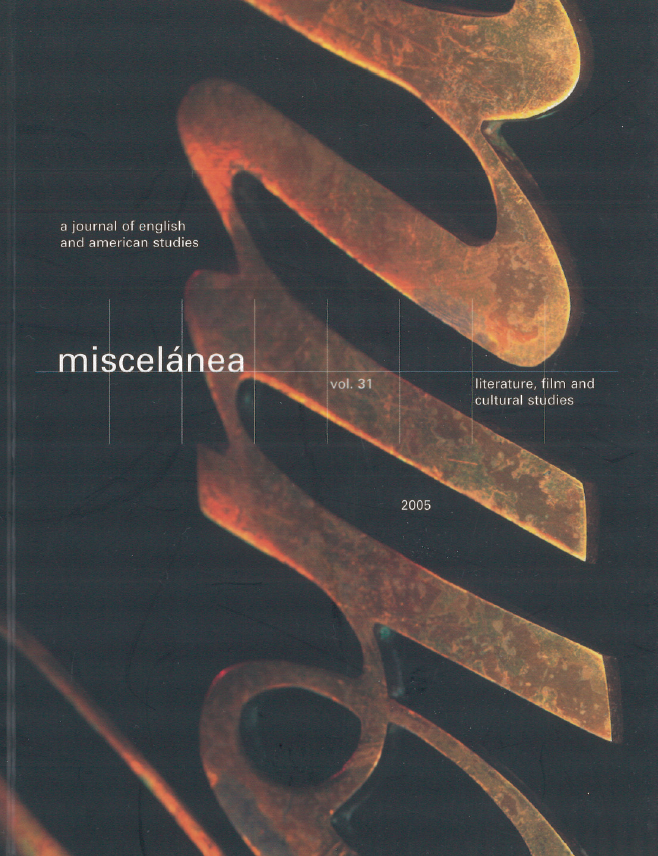Algunas consideraciones sobre la propuesta de análisis de la cohesión léxica de M. Hoey
DOI:
https://doi.org/10.26754/ojs_misc/mj.200510382Keywords:
Hoey's lexical cohesion model, internal organization of texts, identification and classification of lexical repetitionsAbstract
M. Hoey’s (1991) lexical cohesion model offers useful tools for analyzing the internal organization of texts by means of the identification of their lexical connections. Based on previous research on the applicability of the method, this paper will try to provide an insight into its intricacies and, at the same time, explore some formal aspects which seem to need some revision. Although a very valid means for describing textual patterns and not an end in itself, the initial stage of the method, the identification and classification of lexical repetitions, poses practical problems concerning ellipsis, substitution or co-reference and, within the latter, specifically, the analysis of textual elements. Other practical aspects such as the treatment of cataphora or the use of artifacts such as the link triangle are also dealt with.
Downloads
References
BENBRAHIM, Mohamed y Khurshid AHMAD. 1994. “Computer-aided lexical cohesion and text abridgement”. Technical report. Knowledge Processing, 18. University of Surrey.
BERBER SARDINHA, Tony. 1997. Automatic Identification of Segments in Written Texts. Tesis inédita. English Department University of Surrey. Descargada en Mayo de 2004 desde http://www2.lael.pucsp.br/~tony/theses.html
— 2001. “Lexical Segments in Text”. En Scott, Mike y Geoff Thompson. (eds.). Patterns of Text. In Honour of Michael Hoey. Amsterdam: John Benjamins: 213-238.
DÍAZ GALÁN, Ana. 2002. “La cohesión léxica como indicador de las categorías esquemáticas del artículo de prensa”. Revista Canaria de Estudios Ingleses, 44: 245-265.
— 2004a. Estudio de la Cohesión Léxica en la Prensa Británica. La Laguna: Servicio de publicaciones de la Universidad de La Laguna.
— 2004b .“Una caracterización genérica de las noticias de la prensa británica por medio de la cohesión léxica”. Odisea, 5: 45-60.
DÍAZ GALÁN, Ana y María del Carmen FUMERO PÉREZ. 1997. “Making reading easier”. En Bolaños, Lydia Esther, Alexander Cárdenes y M. García. (eds.). 1997. Actas de las I Jornadas Canarias de Lenguas Aplicadas a la Ciencia y la Tecnología. Las Palmas de Gran Canaria: Universidad de las Palmas de Gran Canaria: 102-107.
— 2003. “The Problem-Solution Pattern: A Tool for the Teaching of English?”. BELLS 13. Versión electrónica http://www.publicacions.ub.es/revistes/bells13/
DIK, Simon. 1997a. The Theory of Functional Grammar. Part I: The Structure of the Clause. Segunda edición revisada por Kees Hengeveld. Berlín: Mouton de Gruyter.
— 1997b. The Theory of Functional Grammar. Part II: Complex and Derived Constructions. Segunda edición revisada por Kees Hengeveld. Berlín: Mouton de Gruyter.
FRANCIS, Gill. 1986. Anaphoric Nouns. Discourse Analysis Monographs No 11. Birmingham: English Language Research, University of Birmingham.
— 1994. “Labelling discourse: an aspect of nominal-group lexical cohesion”. En Coulthard, Malcolm. (ed.). Advances in Written Text Analysis. Londres: Routledge: 83-101.
HALLIDAY, Michael. A. K. 1994. An Introduction to Functional Grammar. Londres: Arnold.
HALLIDAY, Michael A. K. y Ruqaiya HASAN. 1976. Cohesion in English. Londres: Longman.
— 1989. Language, Context and Text: Aspects of Language in a Social-Semiotic Perspective. Oxford: Oxford U. P.
HASAN, Ruqaiya. 1984. “Coherence and Cohesive Harmony”. En Flood, James. (ed.). Understanding Reading Comprehension. Delaware: Delaware International Reading Association: 181-219.
— 1989. Language, Context and Text: Aspects of Language in a Social-Semiotic Perspective. Part B. Oxford: Oxford U. P.
HENGEVELD, Kees. 1997 “Cohesion in Functional Grammar”. En Conolly, John H., Roel Vismans, Christopher Butler y Richard Gatward. (eds.). 1997. Discourse and Pramatics in Functional Grammar. Berlín: Mouton de Gruyter: 1-16.
— 2004. “The Architecture of a Functional Discourse Grammar”. En Mackenzie, Lachlan y María Ángeles Gómez González. (eds.). A New Architecture for Functional Grammar: Berlín: Mouton de Gruyter: 1-21.
HOEY, Michael. 1983. On the Surface of Discourse. Londres: Allen and Unwin.
— 1991. Patterns of Lexis in Text. Oxford: Oxford U. P.
— 2001. Textual Interaction. An Introduction to Written Discourse Analysis. Londres: Routledge.
KEIZER, M. Evelien. 1991. “Referring Expressions in Functional Grammar: how to define reference and referring expressions”. Working Papers in Functional Grammar, 43.
LEECH, Geoffrey. 1969. A Linguistic Guide to English Poetry. Londres: Longman.
MAES, Alfons. 1987. “The Pragmatic Value of Cataphoric Relations.” En Nuyts, Jan y Georges De Schutter. (eds.). Getting one’s Words into Line. On Word Order and Functional Grammar. Dordrecht: Foris: 131-146.
MARTIN, James R. 1992. English Text: System and Structure. Amsterdam: John Benjamins.
— 2001. “Cohesion and Texture”. En Schiffrin, Deborah S, Deborah Tannen y Heidi Hamilton. (eds.). The Handbook of Discourse Analysis. Oxford: Blackwell: 35-53.
RENOUF, Antoinette y Alex COLLIER. 1995. A system of Automatic abridgement. Research and Development Unit for English Studies: University of Liverpool.
SARACENI, Mario. 2002. “Review of Patterns of Text: In Honour of Michael Hoey”. Linguist List 13.230. Descargado en Mayo de 2004 desde htpp://www.linguislist.org/issues/13/13-230.html
SCOTT, Mike y Geoff THOMPSON. (eds.). 2001. Patterns of Text. In Honour of Michael Hoey. Amsterdam: John Benjamins.
VAN DIJK, Teun. 1980. News as Discourse. Hillsdale: Lawrence Erlbaum.
— 1986. “News schemata”. En Cooper, Charles R. y Sidney Greenbaum. (eds.). Studying Writing. Linguistic Approaches. Londres: Sage: 155-185.
WINTER, E. O. 1979. “Replacement as a Fundamental Function of the Sentence in Context”. Forum Linguisticum, 4 (2): 95-133.
Downloads
Published
How to Cite
Issue
Section
License
Copyright (c) 2005 Ana Díaz Galán

This work is licensed under a Creative Commons Attribution-NonCommercial 4.0 International License.


